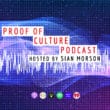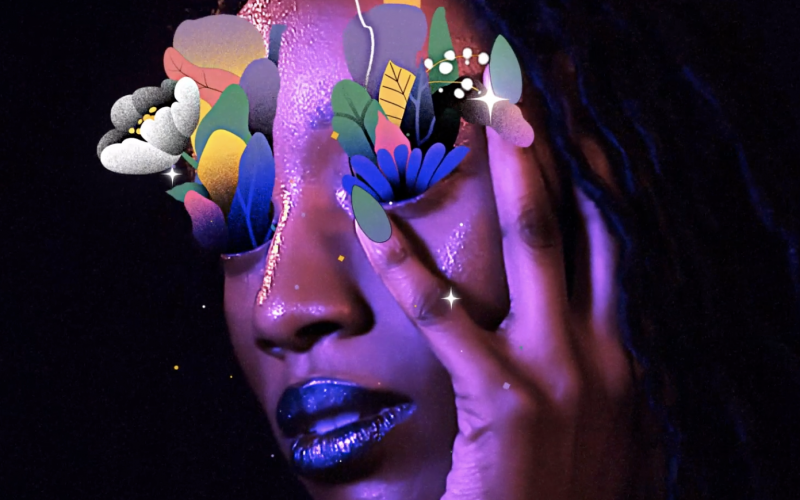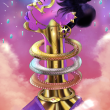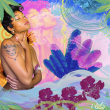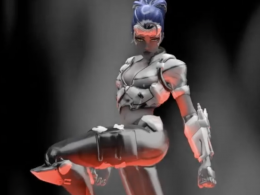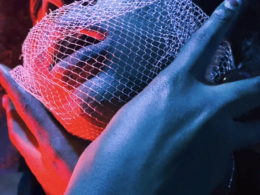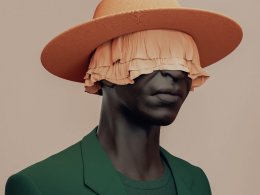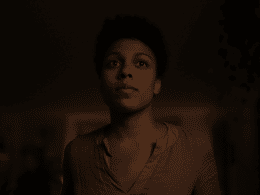Is there a misconception that there are no photographers in NFTs why or how does photography lend itself to the NFT medium?
I can definitely say that the photographers are loud and proud in the NFT space, and have made some ground-breaking sales as well. I think right now that the space is purposefully being catered to 2D and 3D digital artists, but it’s not like photographers do not exist or are not successful in this space. I think there is a slight assumption that photographers don’t populate the space, but as I’ve said before in reference to people saying there are no women in crypto art: if you don’t look, then you won’t find them. Just like many of the NFTs on sale right now, photographs are a visual medium to be visually consumed, so it lends itself to NFTs as photography lends to Instagram, haha. Hopefully, as more artists enter the space, more collectors who appreciate diverse artwork will as well and we’ll see varied collections in the space.
Tell us about your project with Black Women Photographers. What is the ultimate goal there?
This project I’ve mostly been running on my own! Initially, it started off with three talks for Black Women Photographers on an Intro to NFTs over the course of a week which I did with my now great friend, Lauren Washington. Afterward, a crypto artist and photographer, James Leder, reached out to me offering to “donate” his remaining invitations to Foundation to help onboard Black women photographers. After that initial contribution, many other artists reached out to give their invitations and I served as the middleman finding photographers (which soon grew into Black women artists at large) and helping them with information, or an invitation. So far, I’ve onboarded about 25 women with the community’s help. To put it very simply, the ultimate goal is to put knowledge and opportunities into the hands of Black women. So often we are left out or behind, but with this evolution of the art ecosystem, I’m thankfully in a place to help combat that happening for another time.
My favorite piece of yours is ‘I Am The Black Gold of The Sun”. The description says “This is a photograph about proudly displaying your true unhindered self after struggling to reach that place of self-acceptance.” Can you expand on that?
The series is constantly being evolved. I take photos out and put them in, reorder the photographs, but that photo, “I Am the Black Gold of the Sun”, always ends up last. In recent years, I’ve really tried to intentionally focus on how I was portraying Black people in my work. There is so much real and imaginary content of us being in dark places and portrayed in pain, that I’d like my contribution to the world and our collective conscience (at least at this time in my career) to be beautiful and light. Even when I have depicted pain, it’s been important to represent that pain in a certain way, because I’m tired of the traumatic narratives and visuals I’m constantly forced to consume. This series focuses on the journey to self-acceptance. It’s somewhat abstract but that’s the overall meaning of the series. The final photo, “I Am the Black Gold of the Sun” is this uplifting, glowy piece meant to represent the euphoria of displaying yourself authentically and wholly to the world. Everything from the colors, setting, and body language just exudes this light and declaration. The title of this one photograph, and the series as a whole, was pulled from the song of the same name. It’s this really beautiful piece talking about Black beauty and really inspired the creation of the series.
As a QWOC what are the main challenges for you as an artist?
I feel that often other people, usually cis white men, are very quick to overlook QWOC. Especially when it comes to scouting artists for opportunities or connecting, it’s often that QWOC are completely left out, ignored, or tokenized. I’m looking forward to the future when queer women of color are sought out for their knowledge, experience, and talent and no longer added to projects to fill the diversity quota.
Have you found the NFT community to be welcoming for you?
Extremely so! I think I’ve really found a home within the Black artist community, but even outside of that many of the artists are very welcoming and encouraging, and I’ve felt pushed very positively to level up my artwork as well as my mindset towards my art.
Why do or don’t you think that it’s necessary to amplify the voices of BIPOC and LGBTQ artists in the space?
It’s absolutely necessary to amplify marginalized voices. Even in the crypto art space which is developing, I’ve seen and experienced exclusion and white supremacist philosophy that some in the space operate with. Just because a space is newly developing does not mean that BIPOC and LGBTQ+ communities are suddenly heard and supported. I think right now it’s even more important as well because we’re building history. What we’ve seen in the past, for instance with the Stonewall Riots in NYC, is that it’s common that individuals’ contributions and prominence at the time are erased from the narrative later on. Using the StoneWall Riots as an example, it was actually Black trans women leading the movement at the time, yet white gay men ended up receiving the majority of the credit for a long period of time. Although the history of the blockchain is recorded, the narrative can be erased or rewritten based on whose voices are amplified. There is a lot of work to be done to make sure that not only that doesn’t happen now, and living people see the fruit of their talent and labor, but also in the future, we’re not written out of the history we’re making.
Can you speak about your piece “Blurring the Binary?”
That photograph is one of my partner, Jesse Soleil, another pretty prominent artist in the crypto art space. This portrait was a comment on the blurred lines of binary gender as well as toxic masculinity. Jesse and I have been together for a long time, we’ve pretty much grown into our individual selves together, and as always being a young growing person means that you start questioning your own identity. Jesse was the first person that I let into my life about my queer sexuality. Those conversations around queerness and sexuality grew to gender and public perception. Especially right now, I think gender fluidity is supported in a very public way, so they were conversations we were very open to having with one another. For Jesse, the performance of gender was more complicated, due to the expectations of men in society and especially at home. So, I put this portrait together, which we shot at a park, in public, to represent that personal clashing. It’s one of my favorite portraits of him, and I’m glad that my collector, Aito, thinks so as well!
What do you shoot with?
What I shoot with has varied as I grow my equipment. I started out with a very old Nikon, but I won the grand prize in a national photo contest earlier this year, and I was awarded a whole equipment overhaul. Now, because of that, I shoot with a Canon EOS R6. It’s been a great tool for me so far!
How do you decide what works will be minted as NFTs?
I try to be very intentional with my choices and pick works that I feel are among my best. In the past I did experiment, but it was important that whatever I minted was something I was genuinely proud of and will be happy to see living on the blockchain for the rest of time. Because of that, I’m pretty slow with my drops and I like to space them out so I’m not just minting my whole archive to only regret it later.
There is a very unique color palette to your work. I believe that is intentional. Can you describe?
I edit based on how I’m feeling and what I think fits the photos, but when I look at my work as a whole, I see a lot of golds and greens. I find those colors, in the way I include them, to be very calming and add a natural look to my photos that I enjoy.
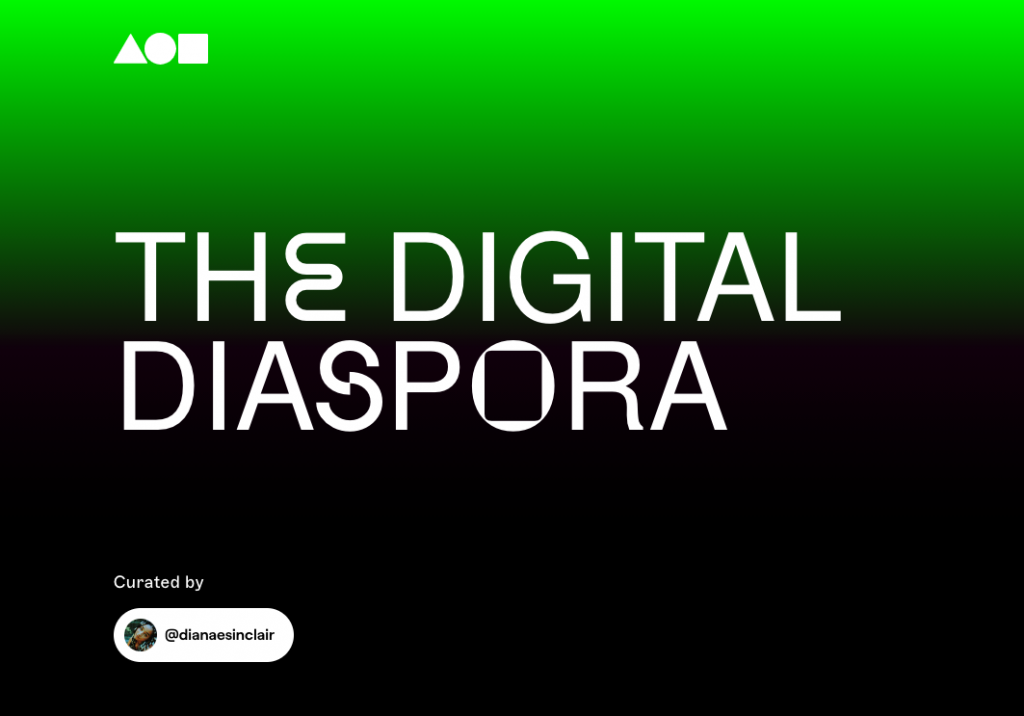
Can you talk about The Digital Diaspora exhibit that you’re curating?
Absolutely! The Digital Diaspora is an exhibition spotlighting Black creatives in the metaverse from all around the world. On a day essential to acknowledging Black freedom, Juneteenth, we’ll be raising money from a portion of the proceeds to go towards anti-racist equity-building initiatives: GLITS and HerstoryDAO. Black creativity has always been the foundation for popular culture, yet that creativity is more often exploited than uplifted. There’s a history of inequity in relation to the government but also in the entertainment and fine arts industry. The Digital Diaspora is the first of hopefully many spotlights on Black creatives that will feed into repairing the Black creative community and giving Black people the ability to thrive in these spaces.
Where did the idea come from?
The idea was originally born during a late night conversation around NFTs, and wtf they were, back in March with Zak Krevitt. After having already been in the space for only a few days at the point of the conversation, I saw immediately the lack of Black women and successful Black artists. It was at the time discouraging, but Zak and I birthed the idea of creating a Black artist spotlight to combat that inequity. It transformed many times over from that first idea, but then everything aligned with Foundation, Superchief, and herstoryDAO, to make this a solid event and true showcase of Black talent.
What are you hoping to achieve?
Personally, I’m hoping we achieve two main goals. One, we get all the artists a major boost into the spotlight. Being a Black artist means that you’re often made to feel invisible. No matter how much Black creativity contributes to culture, the credit is not given or it is stolen entirely. The Digital Diaspora at it’s very core was made to provide high levels of visibility for Black artists in the metaverse, to combat the same patterns of exclusion that come from the traditional art world. The second goal is to put money directly into Black pockets. The proceeds from this exhibit are going to GLITS, which provides housing to help Black queer people, often those who came right out of Rikers island. As well as herstoryDAO, which is an artist-led DAO aiming to help Black women and nonbinary artists in the crypto art space. A portion of the funds will also be kept by the artists. It’s important that the money go to these groups because essentially we’re just trying to help Black artists thrive. After so long and often being depleted of resources, energy, time, credit, the list goes on…at some point, something must change.
The show will be on Foundation as well as IRL. Why was the IRL component important to add to the show?
We’re here to take up space, as much space as possible. That’s why there are so many facets to this project. On a day that is pivotal to Black liberation, how can we not go all out? We’re thinking as well how we can help these artists succeed in the non-metaverse, and having on your CV that you participated in a group show in Manhattan is a huge boost. I think, not only on paper but also mentally. Some artists struggle with feeling validated because at every turn it seems that the odds are stacked against them, especially as Black artists who also need to combat systemic racism. Hopefully, being illuminated on several levels will help these artists thrive in all ways. We’re also now able to create a safe space to meet, converse, and celebrate ourselves and each other in a beautiful way. Even those who can’t make it definitely feel the energy already radiating off the day. On a personal note, I’m also very excited to have this space to uplift and actually meet many of the friends I’ve made in these past several months.
Do you see the Digital Diaspora show as a part of your activism?
Absolutely. On a Foundation Clubhouse panel I spoke at before, I said that my artwork alone was a form of activism, because I have a focus on putting the images of people who do not have the same visibility as others onto the blockchain. I believe that creating this show, with other amazing artists who come from different areas of the NFT space, is a collective action of social justice. Not only because of the goal of the show, which is to raise money to help Black people thrive inside and outside of the metaverse, but also because we’re increasing visibility in a way that will hopefully trickle out to all Black artists in the space. I feel like white people, white men, especially have a tendency to look right through Black creatives. They look past our accomplishments, our artwork, ourselves in general. But, in this show we’ve been able to increase our visibility, so that our presence cannot be missed. In this way, it’s not only ON the blockchain but we’re showing up in the real world and illuminating exactly what Black people have always brought to the culture. We’re now saying they should be acknowledged, and paid for it.
You are curating the show, will there be more curation in your future?
I hope so! I feel like as with being an artist and crafting an image, curation is just a wider version of creating something artistic. I’m hopeful to be a voice of advocacy as well for artists who are underrepresented, although never less talented or hard working.
Can you talk about your involvement in the Herstory DAO?
I’ve been with herstory since the birth of the idea on a twitter thread by Cyn Bahati. Things have moved at warp speed ever since. A big part of what I’ve been doing within the group is helping develop projects as we figure out what our defining steps will be in the metaverse. To me it was very important to be a part of herstory, because without us, there’s a huge gap in equity in the crypto art space. herstoryDAO provided a community that was kind and uplifting. Every member intimately understands the struggles we face in society, and that communal understanding allows us the strength to push forward in spite of that.
Can you speak to some of your favorite pieces in the show and speak to why you selected the artist and their work for the show?
I’m really a fan of the work created for The Digital Diaspora by Tyler Givens and Lyonna Lyu, if I have to pick two.
To speak to Tyler’s work, he overall has created unique characters and a world through a creative style, and it really pulls you in. For this exhibit, Tyler made a piece titled “002_THE-PRINCESS-ESCAPES”. I was in communication with him throughout the process, and I can’t describe how impressed I was by not only the visual execution but audio creation as well. Everything in this piece is wholly Tyler, and it’s extraordinary. The music is a techno-masterpiece, and the princess who is the centerpiece, is not only eye-catching but so intricately detailed. It easily left me speechless the first time I saw it. I think Tyler has done something very difficult, which is to create a distinguashable style and brand, in a way which can only be expanded upon. Also, as a creative Black person, it’s refereshing to see these innovative, and just flat out cool characters being created with the image of a Black person, from a Black queer person’s vision.
I’m also a huge fan of the work created by Lyonna Lyu for this exhibit. They created work that is political and speaks to their culture and the strife going on back at their home. Lyonna, even just through speaking with them, has shown me so much strength in their daily life and that same power translates into the work that they create and have submitted to this show. I was happy that through this show we could give Lyonna visibility not only for their artwork but for the work they do surrounding activism and creating a better world back in their country. Lyonna’s work carries a heaviness that ties you into the piece’s story in a way that is so impactful.
How important is it to give back and to raise the visibility of underrepresented artists in the NFT space?
It is essential. In order to break the patterns of inequity in the past we have to actually do something different now. We’re at the very baby beginnings of the NFT space, yet the same patterns are appearing. Now is the time to seize control of the downward spiral before it becomes too ingrained in stone, like in the traditional art world. There are so many artists I have met who are so creative, innovative, and driven, yet they’re not seeing the same numbers in bids, opportunities, or followers, as we see for non-Black creatives. It’s scary and hopeful to think that we’re at a point now where we can stop the gates from shutting with us left out.
Do you plan to mint more NFTs?
Of course! I have several different series that I’d like to create and mint, experiments to try, and artists I’d love to collaborate with. There’s so much to do and so little time, but I’ll definitely be minting more.
Where do you think the NFT space will be in 10 years? How will it have evolved?
Sometimes I feel like the worst person to ask that because although I know how amazing the technology is, I’m not an expert on how it’ll evolve or how far it will go in ten years. What I do believe though is over time artists will realize that NFTs provide a sort of freedom that doesn’t exist in the centralized world. Ten years in the crypto world is like five hundred years so who knows? I’ll definitely be along for the ride though.
Please share anything else that you’d like for the audience to know.
The support I’ve received thus far as a young artist has been beyond anything I’d expected when stepping into the space, and I’m incredibly grateful and reinvigorated to put more of myself into my art and the world.
Follow Diana on Twitter, Foundation, and Instagram. You can access The Digital Diaspora on Foundation. Also be sure to check out our features of other artists in the show: Latasha’, Jahmel Reynolds, Lauren Washington, & Blacksneakers.

